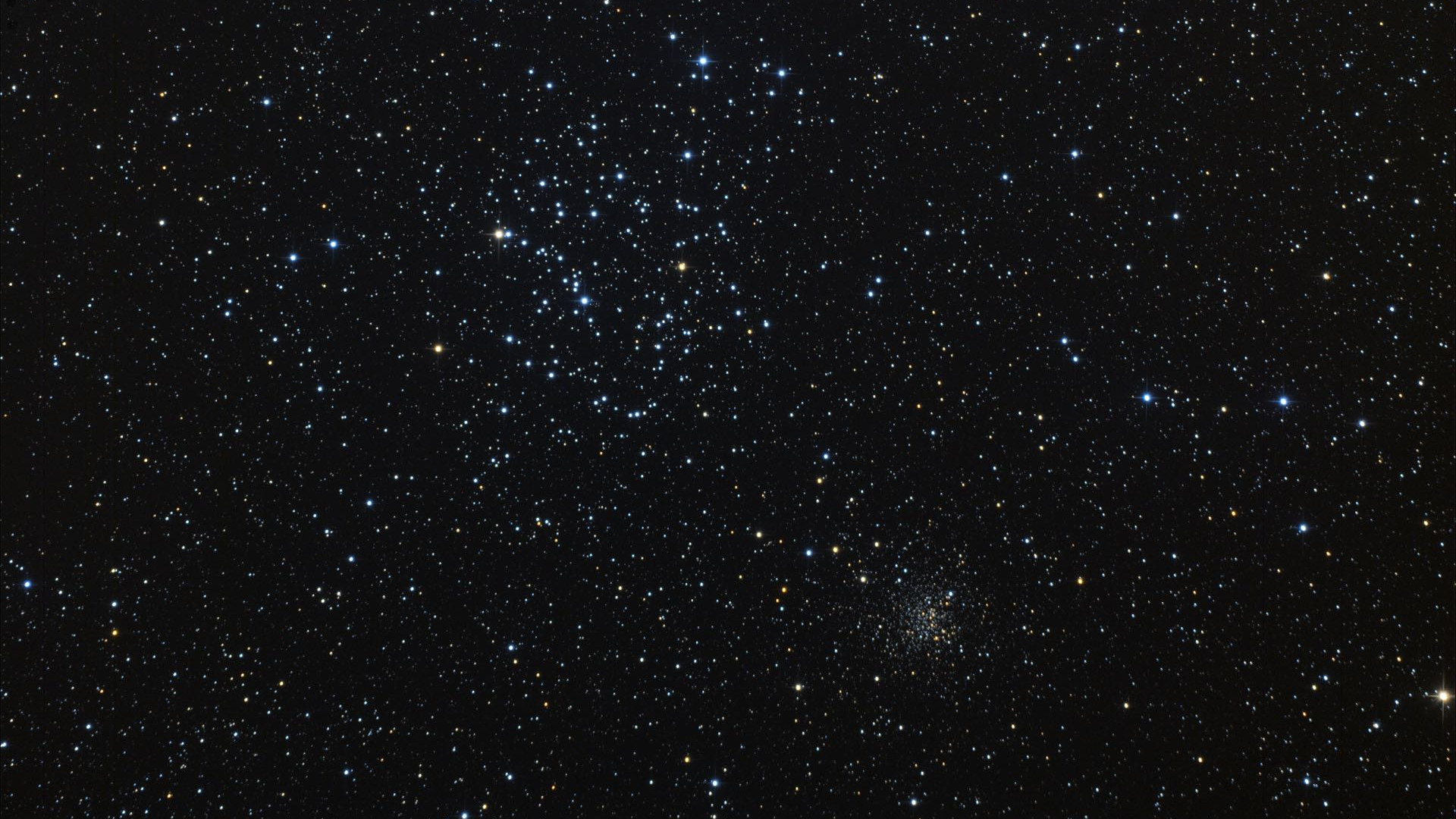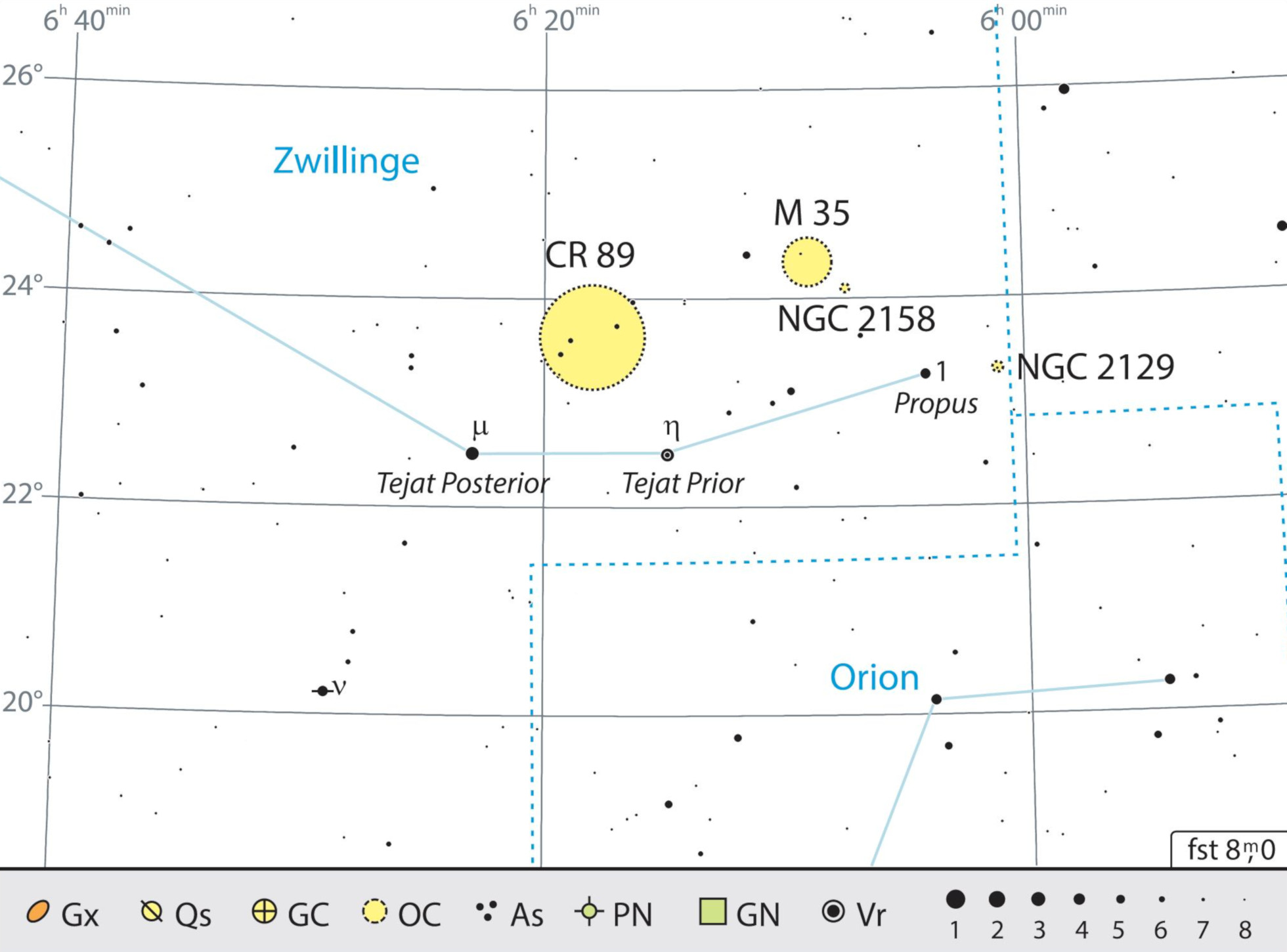At Castor's feet
M35 is the highlight of any binocular tour of Gemini; however, there is much more to discover around the open cluster.
 M35 is the highlight of our binoculars tour of Gemini. The open cluster NGC 2158, however, can only be observed with a telescope. Marcus Degenkolbe
M35 is the highlight of our binoculars tour of Gemini. The open cluster NGC 2158, however, can only be observed with a telescope. Marcus DegenkolbeOur binoculars tour through the night sky leads us west from the two brightest stars of the constellation of Gemini to the border with Orion. Starting at Castor, a slightly curved line of stars leads to Tejat Posterior (μ Gem) and Tejat Prior (η Gem). Together with these, the north-lying open cluster Collinder 89 forms an almost equilateral triangle.
Diverse neighbours
The largest object on our tour is larger than the diameter of the full Moon. A group of five stars, reminiscent of a horizontal Christmas tree or a rocket, immediately stands out in binoculars. The fainter stars are barely visible. It's difficult to distinguish it from its surroundings, quite unlike Messier 35, which is located on the edge of the field of view to the west.
Under a dark sky, even with the naked eye, we can see this open cluster as a fuzzy spot. But it becomes really interesting when observed with binoculars: then the nebulous speck transforms into 15–30 glittering and sparkling stars occupying an area the diameter of a full Moon.
Binary stars – or not?
If you head west from Messier 35 past Propus (1 Gem) and then one degree further west, you come across an elongated knot of stars, which looks like a partially separated binary star. But a glance at a star chart will tell you: it's a cluster called NGC 2129.
Back to Collinder 89 and Tejat Posterior: around 2.5° further south of this, you will come across a curved chain of four stars. The most southerly and brightest is the magnitude 4 star ν Gem. In binoculars, you can see that it has a weaker companion almost directly to the north. Although at a distance of 113” it easily separable from the primary star, you have to look closely to see the magnitude 8 star. However, it is only optically a binary star; there is no physical relationship between the two components.
If the seeing is excellent, and you’re looking for a real challenge for 10×50 binoculars, NGC 2158 is to be found at the south-western edge of M35. But since it is around six times further away than M35, it only appears as a small speck or a blurred star. A definite identification can only be achieved using a tripod or a higher magnification.
 Location map for the binoculars tour in the constellation of Gemini. J. Scholten
Location map for the binoculars tour in the constellation of Gemini. J. ScholtenAuthor: Kay Hempel / Licence: Oculum-Verlag GmbH
